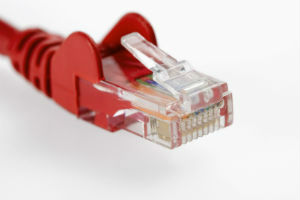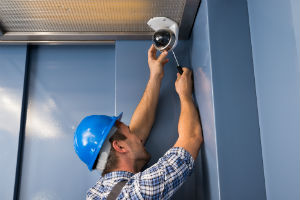When installing an intelligent solution, knowing which type of solution to deploy (e.g., edge- or server-based) and how to deploy (e.g., indoor or outdoor) is crucial to the success of your analytics.
Edge- vs. server-based
Server-based solutions
When deploying a server-based solution, CPU type, memory, OS, storage, and network all need to be taken into consideration.
One of the major advantages of a server-based system is processing power. With more processing power, more complex and advanced analytics can be processed.
 One of the major advantages of a server-based system is processing power. With more processing power, more complex and advanced analytics can be processed. At the same time, more processing power means more bandwidth, which M. Kumaraguru, MD of Maha Asia, explained is a significant drawback. "All the data must be continuously transmitted from the remote sites to the central servers," he said. "This creates a massive strain on bandwidth and network traffic, frequently requiring a reduction in video frame rates to maximize transmission. Viability and integrity of the video data is reduced, decreasing the effectiveness of server-based video analysis and increasing the risk of an intrusion due to frequent clogging of bandwidth and network downtime."
One of the major advantages of a server-based system is processing power. With more processing power, more complex and advanced analytics can be processed. At the same time, more processing power means more bandwidth, which M. Kumaraguru, MD of Maha Asia, explained is a significant drawback. "All the data must be continuously transmitted from the remote sites to the central servers," he said. "This creates a massive strain on bandwidth and network traffic, frequently requiring a reduction in video frame rates to maximize transmission. Viability and integrity of the video data is reduced, decreasing the effectiveness of server-based video analysis and increasing the risk of an intrusion due to frequent clogging of bandwidth and network downtime."
Despite this, server-based intelligent solutions are noted to be more flexible when it comes to configuration, which enables more detailed data processing and various video sources from HD-SDI, megapixel IP, and analog cameras, according to Kelly Lin, Marketing Specialist at Huper Laboratories.
Edge-based solutions
Edge-based solutions have the advantage of being easier to deploy and operate. "Another advantage is that streaming of video is on lower bandwidth as only alerts or notifications are streamed to the control center," said Verghese Thirumala, MD of Maxitulin. "Another advantage is when the network is down; storage at the edge (camera) will have the backup so there will be minimal loss of video."
"Another advantage is when the network is down; storage at the edge will have the backup so there will be minimal loss of video."
Kumaraguru also stressed the advantage of lower bandwidth consumption, saying, "Edge-based solutions must be designed around a distributed, multi-server network versus relying on a centralized server network. The advantages include the lack of strain on network bandwidth, and the recording and analysis of video data is not impacted by network functionality." He added, "Edge-based solutions consume bandwidth only when needed. Data is transmitted on demand, when video analytics identify activity that warrants attention, such as a potential intrusion or sensor malfunction, or when a security operator queries data from a specific camera directly. Other transmissions may be scheduled during downtime, such as a regularly scheduled back up data feed to a centralized server. Due to the lack of network bandwidth required for recording data, all video frames can be recorded on the edge, with no loss of video detail."
While less bandwidth consumption is a positive, there is less processing power on a camera than on a server, resulting in a limited number and types of analytics that can run per camera.
Indoor vs. outdoor installations
 Installation requirements vastly differ between indoor and outdoor installations due to the different conditions under which cameras and sensors are placed. "Different application scenarios require different calibration and sensitivity settings, and some may also require specific cameras to fit environmental conditions to effectively improve accuracy and minimize installation efforts," Huper Laboratories' Lin. For example, cameras used for outdoor applications will need to be able to withstand temperature spikes and drops, as well as rain and humidity, things indoor applications need not worry about.
Installation requirements vastly differ between indoor and outdoor installations due to the different conditions under which cameras and sensors are placed. "Different application scenarios require different calibration and sensitivity settings, and some may also require specific cameras to fit environmental conditions to effectively improve accuracy and minimize installation efforts," Huper Laboratories' Lin. For example, cameras used for outdoor applications will need to be able to withstand temperature spikes and drops, as well as rain and humidity, things indoor applications need not worry about.
In comparison, indoor installations are pretty straight-forward compared to outdoor installations as conditions can generally be controlled. Furthermore, indoor systems generally have a narrow field of view (FOV) and can provide relatively high-resolution images, which in turn results in more accurate data. However, lighting can still be an issue indoors. Exterior glass walls and windows, skylights, and lighting fixtures can present significant challenges as the variability of light as the sun moves throughout the day changes, explained Jeremy Haltom, Sales Engineering Manager at RetailNext.
On the other hand, outdoor installations must deal with constant lighting changes, environment changes, and overall scene changes.
"Unlike indoor intelligent video systems, which are designed to operate in static environments, outdoor solutions must contend with an environment that is constantly changing, so it's critical to choose a system designed to overcome the issues," said John Romanowich, CEO of SightLogix. "Cameras are mounted high on poles which shake from even a slight wind or vibration, causing the camera to move along with the entire scene, unless you are using electronic image stabilization. Variable lighting, such as headlights passing through a camera's field of view or reflections off water look like moving objects and will trigger nuisance alerts for visible cameras. Trees and their leaves will flap in the breeze, further creating the appearance of moving objects. When you add in snow, rain, humidity, and dust, such a dynamic environment will wreak havoc for video analytics not intended to operate under such conditions."
Particularly in outdoor applications, one way to get rid of the lighting issues is to use a thermal camera. "With the innovation of cameras with substantially more on-board video processing, combined with thermal video systems built for outdoors, systems are now available that accurately detect the presence of unauthorized persons over site perimeters and outdoor areas with great reliability, even with the issues," Romanowich said. "Because they 'see' heat, they ignore all the problems associated with lighting, as well as the cost to install lights along remote perimeters."